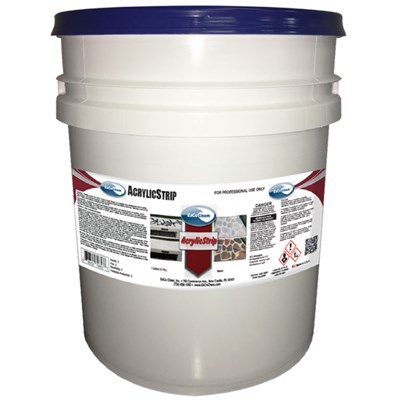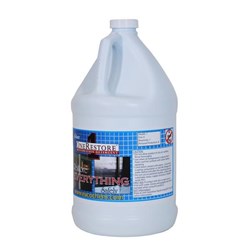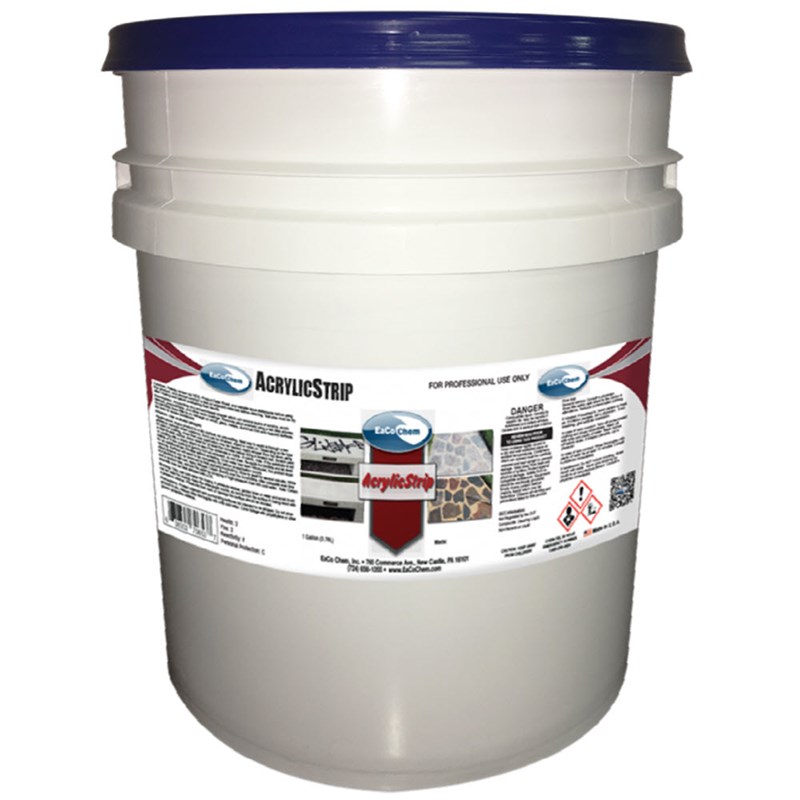Acrylic Strip Stripping Agent 5gal
Quick Overview
- AcrylicStrip will remove layers of acrylics, acrylic latexes, polyurethane and other resin coatings and it is especially good at removing curing compounds from concrete.
- AcrylicStrip is a solvent-based sealer, stain and paint stripper that has a wide range of applications.
- Surfaces Safely Used On: • Decks • Wood • Metal • Sidings • Masonry surfaces
- AcrylicStrip will remove multiple layers of acrylics, acrylic latexes, polyurethane, and other resin coatings.
Show More
Removes:


Depending on the paint or coating involved, more than one appplication may be needed.
Apply the chemical from the top down using a side to side spray.
A small hand pump garden sprayer works very well for small jobs. Use the Protool Battery Sprayer for large tasks.
Allow the Acrylistrip to dwell on the surface for at least five minutes before doing a scratch test.
If you do not see the surface or the coating is gummy, reapply the product and wait an additional 10 minutes before retesting.
Rinsing may be accomplished with a pressure washer, garden hose, or water and a scrub brush.
Note: if you are using a pressure washer to rinse wood, use a 25 degree tip and keep the nozzle more than six inches from the surface.
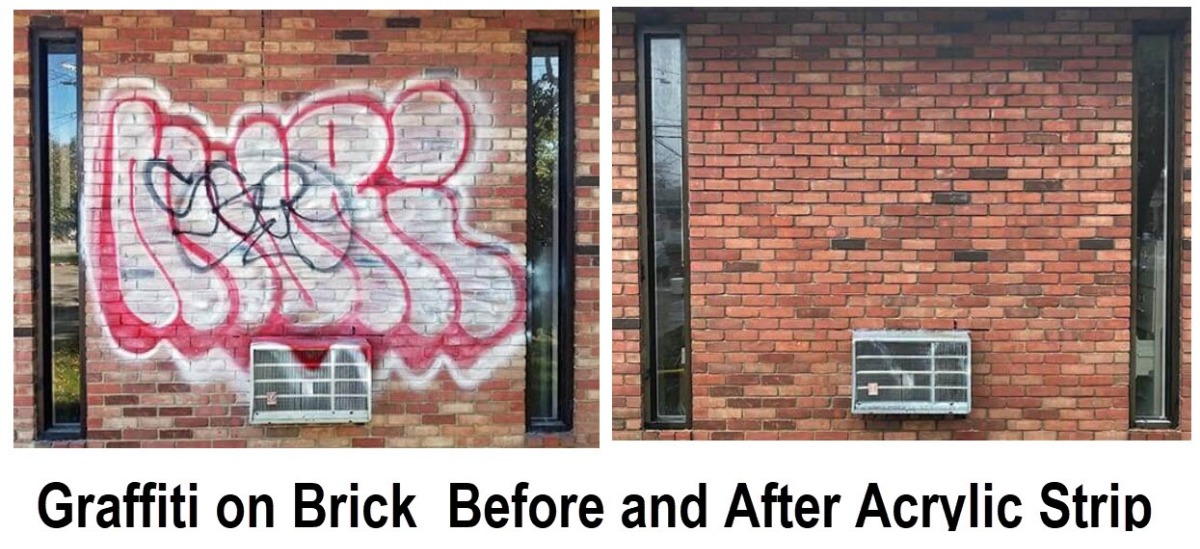
AcrylicStrip, a solvent-based paint stripper, and LCS, a water-based stripper, were both needed on this project due to the multiple types of paint on the surface.
Substrate: Brick Challenge: Graffiti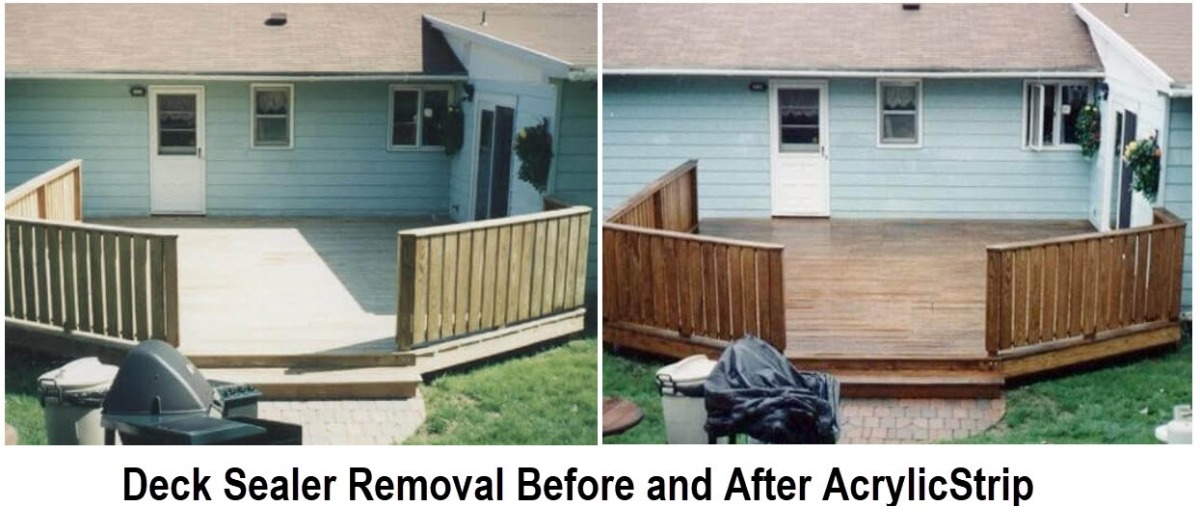
This sealed deck needed the sealer removed. AcrylicStrip was chosen as the appropriate choice after testing was completed. The end result prepped the surface for the deck to be restained.
Substrate: Wood Challenge: Sealer Removal
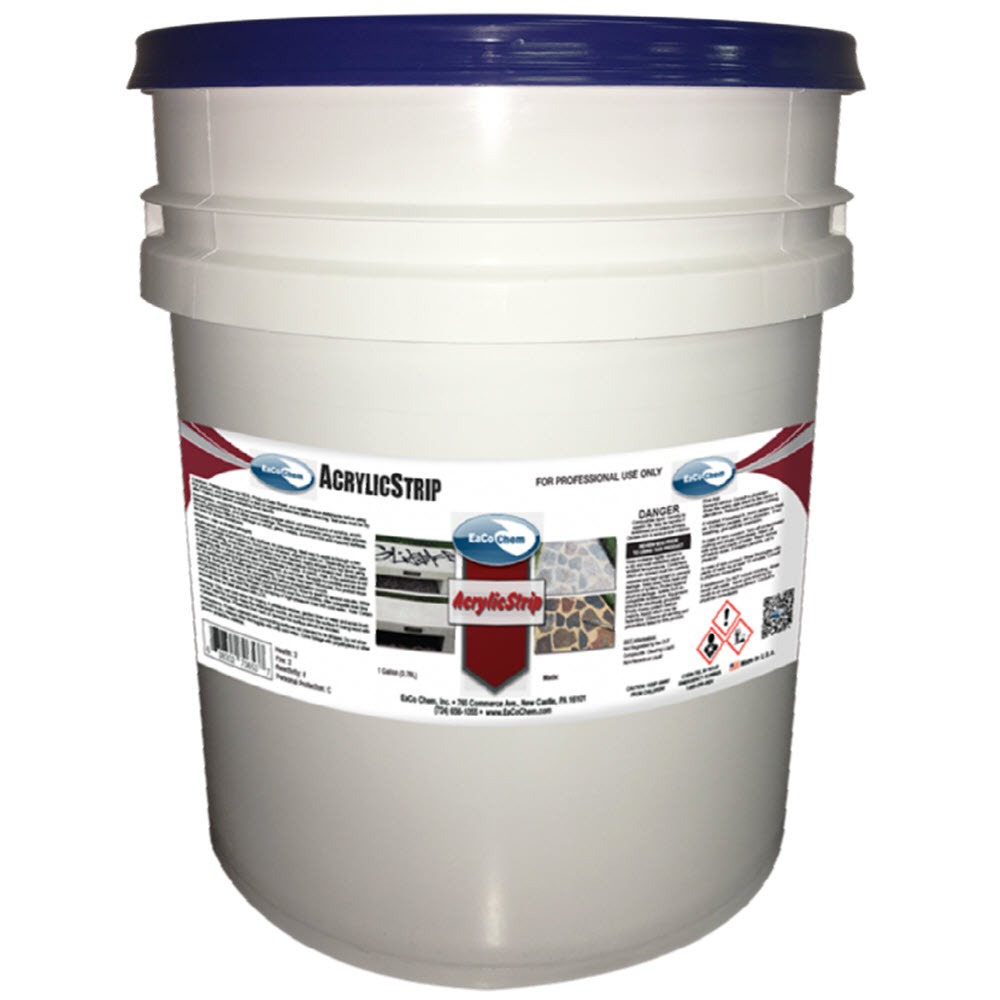
AcrylicStrip is a solvent-based sealer, stain and paint stripper that has a wide range of applications. AcrylicStrip will remove layers of acrylics, acrylic latexes, polyurethane and other resin coatings and it is especially good at removing curing compounds from concrete.
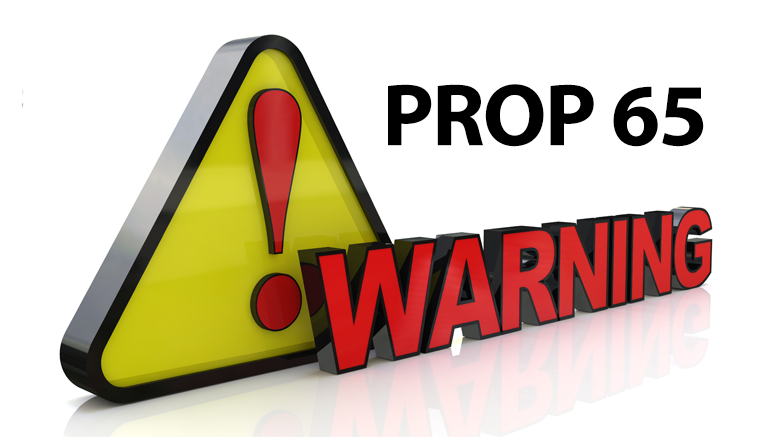
Proposition 65 requires businesses to provide warnings to Californians about significant exposures to chemicals that cause cancer, birth defects or other reproductive harm. These chemicals can be in the products that Californians purchase, in their homes or workplaces, or that are released into the environment. By requiring that this information be provided, Proposition 65 enables Californians to make informed decisions about their exposures to these chemicals. Proposition 65 also prohibits California businesses from knowingly discharging significant amounts of listed chemicals into sources of drinking water. Proposition 65 requires California to publish a list of chemicals known to cause cancer, birth defects or other reproductive harm. This list, which must be updated at least once a year, has grown to include approximately 900 chemicals since it was first published in 1987. Proposition 65 became law in November 1986, when California voters approved it by a 63-37 percent margin. The official name of Proposition 65 is the Safe Drinking Water and Toxic Enforcement Act of 1986.
The list of chemicals contains a wide range of naturally occurring and synthetic chemicals that include additives or ingredients in pesticides, common household products, food, drugs, dyes, or solvents. Listed chemicals may also be used in manufacturing and construction, or they may be byproducts of chemical processes, such as motor vehicle exhaust. For more information visit www.p65warnings.ca.gov/


